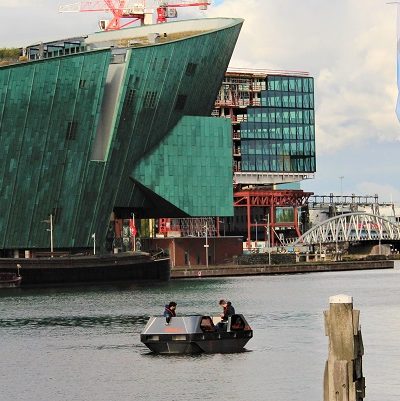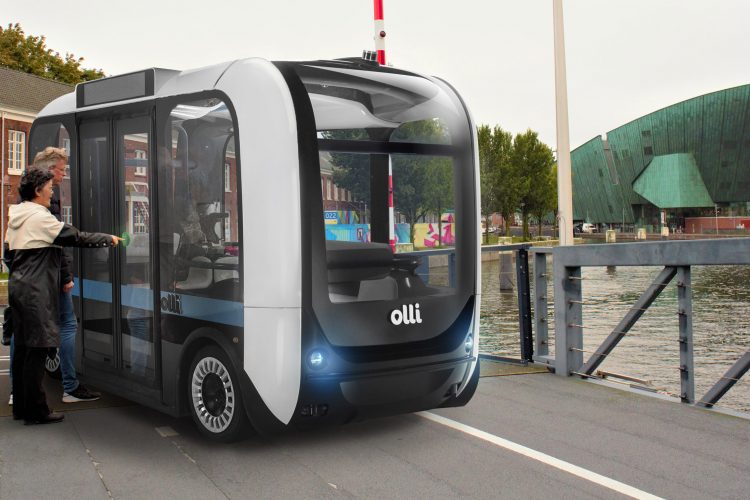Roboat eases congestion in a crowded city


Amsterdam traffic is getting out of control. This leads to congestion and bottlenecks on the capital’s roads, reducing air quality and quality of life in the city. Is autonomous public transport a solution for the city? Olli – a self-driving minibus – is being tested on and around Marineterrein Amsterdam, ferrying visitors from A to B at the restricted-traffic site.
Olli is a fully electric, self-driving minibus that can carry up to eight passengers per trip. Using a smart sensor on the roof, Olli continuously scans its surroundings, allowing it to respond to changing traffic situations and learn from them.
Developments in flexible and collective transport solutions such as Olli could help to keep the city accessible and use the space available as optimally as possible. Olli runs around and just outside Marineterrein Amsterdam as part of a test to see whether autonomous vehicles can work in the city. What are the effects on traffic safety? How does Olli respond to other road users? And to what extent can Olli compete with existing means of transport?
In addition, we are investigating the effect that self-driving transport has on local residents. Would people be comfortable travelling in a self-driving bus? Would certain groups of the population – such as people with disabilities, the elderly, and children – find it particularly beneficial? It’s important for this test to provoke a discussion about the use and benefits of autonomous transport. That is why we are organizing discussion sessions between experts and residents during the test period about what we want to learn from the testing and how this type of transport can work to our advantage.
Fully electric
Space for eight passengers
Designed by American firm Local Motors
LIDAR sensor that scans the environment
Artificial intelligence – Olli can recommend a café, answer questions, and even tell a joke
Adaptable to specific user needs, such as people with disabilities
Testing lasts for three months
Runs from the bus stop near the main entrance of the Marineterrein on Kattenburgerstraat to the tram stop near the Bimhuis on Piet Heinkade.
In 2016, the municipality of Amsterdam conducted research into the potential impact of autonomous transport in the city. It concluded that Amsterdam should test this kind of self-driving vehicle to gain experience in applying it and to discover the potential benefits and pitfalls.
The purpose of the test with Olli on Marineterrein Amsterdam is to do exactly that, and to learn from the results, which could lead to Olli also being rolled out in other urban areas and allow further research to be done. Can autonomous transport offer a solution to increasing traffic? Could a self-driving bus deliver packages? How do residents feel about this type of vehicle?
Marineterrein Amsterdam is a privately-owned site that is open to the public, but subject to bylaws and restricted traffic, making it the ideal testing ground for this autonomous, self-driving form of transport. With little traffic around and site rules that apply in addition to the normal rules for each public space, the Marineterrein provides optimal conditions to make the testing as safe and efficient as possible.
These companies and organizations are involved in this experiment